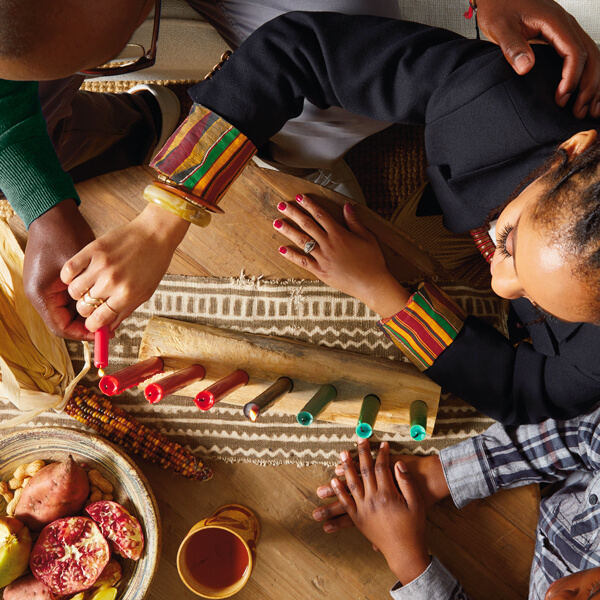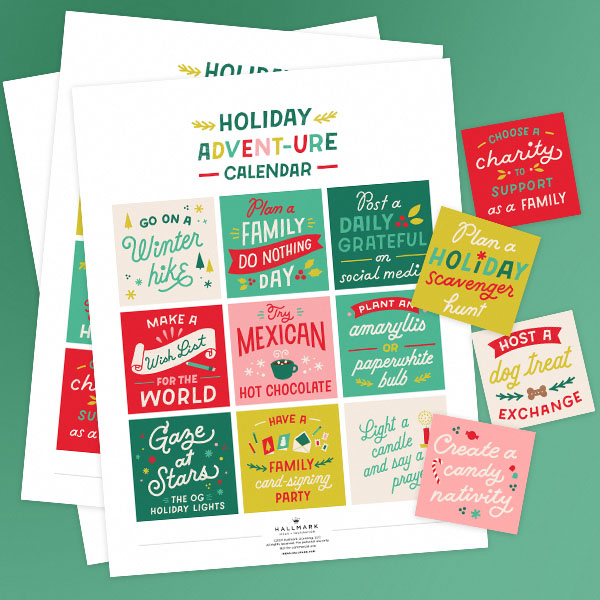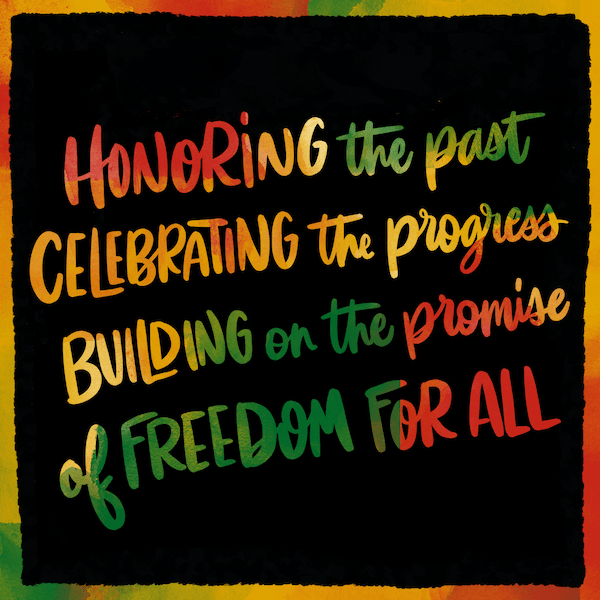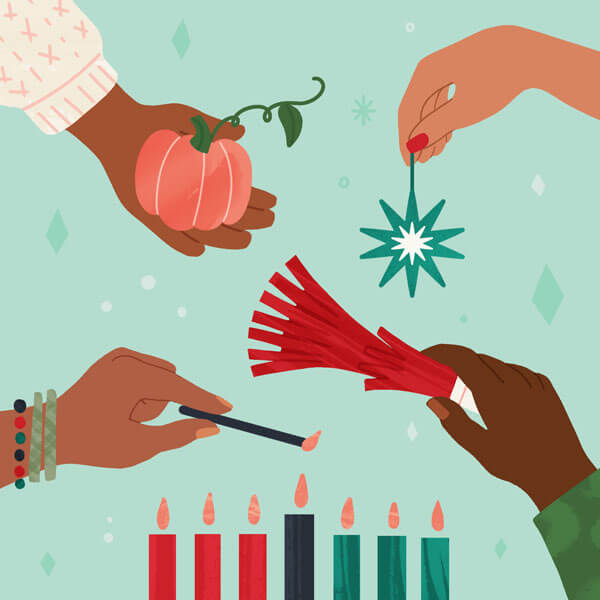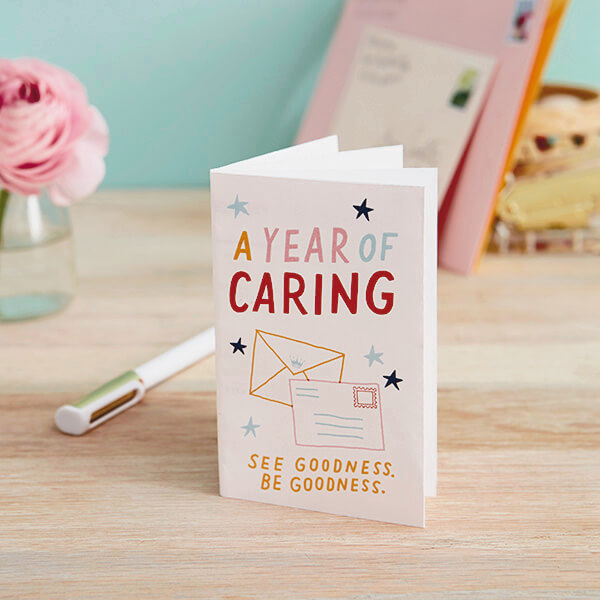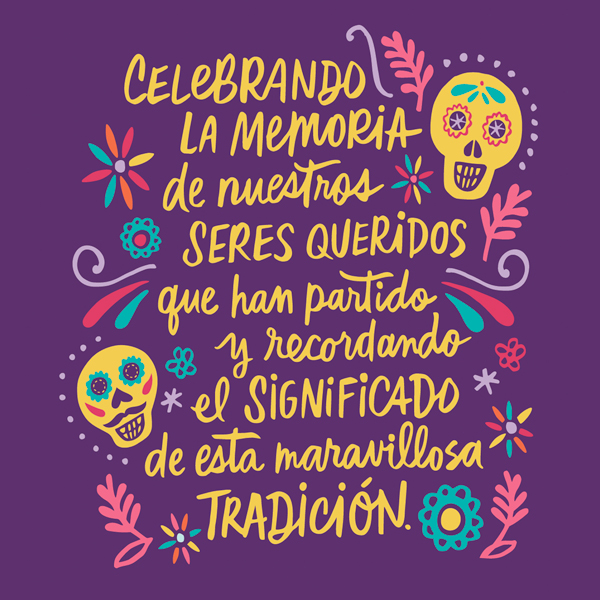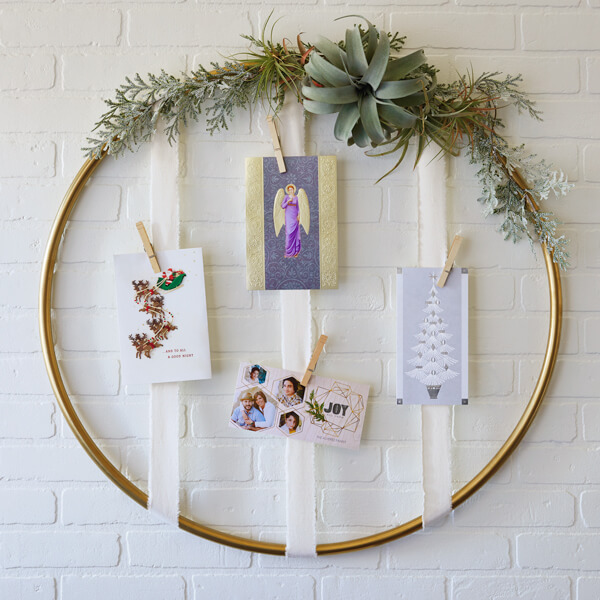Learning about Christmas from a Nativity Scene
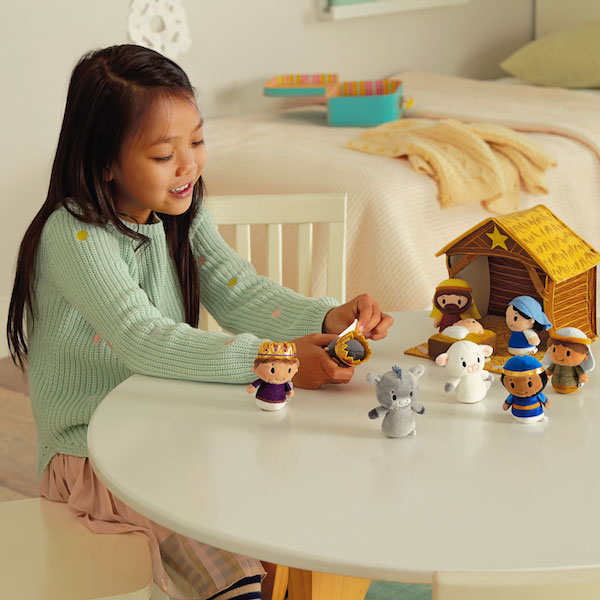
For Christians, there’s one reason for the Christmas season—and the youngest group of celebrators know right where to look for that reason. He’s tucked comfortably in a bed of hay in the family Nativity display.
Inspired? Create and share by tagging @HallmarkStores.
Manger scenes come in all shapes and sizes
The birth of Jesus—and the beginning of a life revered by Christians everywhere—is celebrated and depicted in many ways, but none so visible and impressionable to children as the Nativity scene.
Displayed all over the world dating back to the 13th century, scenes are based on the Biblical Gospels of Luke and Matthew and feature representations of the infant Jesus, Mary, Joseph and others, including angels, shepherds and animals, and the visiting wise men or Magi.
Also called a manger scene or crèche, these displays vary in size and scope. They can be made of common or ornate materials, and even staged with people and livestock as “living Nativity scenes” throughout the Christmas season. It’s pretty easy to see how such displays appeal to kids, who certainly raise their share of questions about what they’re seeing.
So how do kids start learning the message of Jesus’ birth, and how do parents introduce not just the story but the message of Christmas? We asked some friends about their experiences as youngsters and as parents wanting to share sacred aspects of the holiday season.
Meeting Baby Jesus in the family crèche
Michealle B.
On Christmas Eve, we got to open one Christmas gift. I remember when I was younger, I got a book that went through the whole Nativity story, but this book was customized with my name. The story included me going with the three wise men to see Jesus. I still have that book, and what I remember most about it was that it was a great way to introduce that story to me.
Denise J.
What I remember first is my mom’s Nativity set—that she still puts up—that was a hand-me-down from Aunt Opha. It’s very traditional and includes what looks like a handmade wooden stable right up to the roof shingles and all of the pristine porcelain characters.
Then, we would go to my grandmother’s house on my dad’s side. We would put up her Nativity scene, and I’d think, “Wait, these wise men are taller, and they’re brown!” Jesus was brown. Mary was brown.
I remember talking to my parents—I clearly knew Mom was white and Dad was black—but I wanted to know why there were two different Nativities. What color was Jesus? I wanted to know. “Well, different people have different thoughts,” I was told. “We weren’t alive when Jesus was alive, so some people make him look the way they imagine him to look.”
Lindsay E.
We started our kids on the story of Jesus right away. I like that our Nativity figures are representational of the characters and the story—they don’t really have faces because no one really knows what they looked like. And I like that they are not quite white, because I’m teaching my kids that Jesus was not a white dude as He is typically depicted.
Happy Birthday to Jesus
Meg B.
Growing up, Christmas was an exciting time about both Jesus and the coming of Santa. There definitely was a blend there. We had a Nativity scene set up all season minus Baby Jesus. We were taught that Christmas was the day Jesus was born. So after church on Christmas Eve, we would get a cake that said “Happy Birthday Baby Jesus”…and we did sing “Happy Birthday” to Baby Jesus, blow out the candles and eat cake.
After eating cake, we would add Baby Jesus to the Nativity. Then, we’d get into our pajamas, and my sister and I would sit on either side of my dad and read “’Twas the Night Before Christmas” (“A Visit from St. Nicholas”). Then, he would read the Bible story of Jesus.
Lindsay E.
On Christmas Eve, which traditionally for us was when my mom’s side of the family got together, we made a birthday cake for Jesus. It was one of the traditional desserts we had after dinner, and it looked like a birthday cake with red and green sprinkles. My oldest son was 2 when he first asked whether Grandma was going to make Jesus’ birthday cake for Christmas. He also had a birthday party for Jesus at day care, which was at our family church.
Introducing the meaning of Christmas
Cindy P.
I grew up Catholic in Mexico. We celebrated the Santa tradition, but Jesus always came first for us. We learned the story of Jesus when we were quite young. For me, decorating the tree and setting up the Nativity scene was the fun part of Christmas. It was an impressive set to me when I was a kid, so the stable became my dolls’ playhouse.
My mom explained to me that the scene was the religious part of Christmas, and I needed to understand first that we celebrated the holy days. She would say the Nativity scene was here to reflect on and to remember that Baby Jesus brings us happiness, peace, joy and blessings: “This is not a playing house for you.”
Denise J.
Together, my kids and I read the Christmas story and other Christmas-themed books from Thanksgiving to Christmas. Their dad is Haitian, and we will go to holiday services in French with mostly brown people. We do have religion, but it’s not ingrained in them to the point of “You must understand and believe this”—but this is why the whole holiday exists, and take from that what you will. We’re doing it from an informational standpoint. At their ages, 5 and 7, conversations on these topics are just starting.
Michealle B.
It’s hard to understand when you’re young that ultimately Jesus’ whole life was a gift. My parents used the Santa story as a bridge to get me to understand what the purpose of Christmas was; it was a way for them to introduce me to giving. Then, the Nativity story bridges the gap of understanding the significance of this baby and everything He gave to us.
On Christmas Day, we go out and distribute food to people in need. I started doing this with my mom when I was very young, and I’ve done it since I can remember. Now, I do that with my children not just at Christmas but every second Saturday of the month. They get a constant reminder that the things you receive in life are based upon the good things and positivity you put out there. It’s good to know my children are focused on what Christmas is supposed to be about rather than on just things.
Shop Nativity
See allYou may also like
See more-
Christmas Sweet dreams, Santa!
Catch Santa napping on the job with this Snoring Santa Keepsake Ornament featuring sound and motion. With every snore...
-
Kwanzaa What is Kwanzaa?
What is Kwanzaa? A festival of lights rich in African symbolism, it takes place each year from December 26th through ...
-
Christmas Advent calendar activities for adventurous families
It’s time to start the countdown. Maybe it’s about being mindful…or counting your blessings…or preempting your kids a...
-
Summer Ways to celebrate Juneteenth
While Juneteenth was officially recognized as a federal holiday in 2021, this pivotal moment in history has been cele...
-
Christmas Christmas and Kwanzaa: Keeping family holiday traditions and finding your own
Whether you’re single or starting a family, religious or agnostic, someone who celebrates Christmas and Kwanzaa or ju...
-
Halloween Make ghosts and goblins feel right at home this Halloween
Light up your home with haunting Halloween seasonal decor. 🎃👻 Shop now at Hallmark Gold Crown stores or at Hallmark.com.
-
Halloween No scaredy cats around here!
When this black cat crosses your path, you know fun can't be far behind. 😻 🧙♀️ Shop the Zip-A-Long Cat in Hallmark G...
-
Halloween While you’re waiting for The Great Pumpkin this Halloween…
Fly around the pumpkin patch with Zip-a-long Snoopy! 🎃 Shop more frightening finds in Hallmark Gold Crown stores and ...
-
Halloween Light up the night with frightful fun!
Could it be? Could it be!? Yes it is! It’s the Peanuts® Snoopy and Woodstock Halloween figurine! 🎃 🐶 Find it and more...
-
Halloween Where cozy meets mischief and magic
Make some magic this Halloween with this Hocus Pocus hooded blanket. 🧙♀️👻Find more Halloween essentials in Hallmark ...
-
Gifting Relive a favorite from your childhood!
Fill your home with a few small joys inspired by Disney’s “It’s a Small World” 🩵🎎 Shop the collection at Hallmark Gol...
-
Halloween Which house will you be sorted into?
The Harry Potter™ Sorting Hat™ Mug plays sound whenever you lift the lid. Find this chatty mug in Hallmark Gold Crown...
-
Encouragement How to support caregivers
It’s often hard to know how to support a caregiver. Most caregiving checklists out there hit the major topics like me...
-
Love 50 different ways to say I love you
You don’t need to wait for a special occasion to remind that certain someone how much he or she is loved. Spice up yo...
-
Graduation 15 graduation quotes
Celebrate your favorite grad’s milestone with the wit and wisdom of Hallmark writers, fans and others. We’ve rounded ...
-
Congratulations How to congratulate someone
Congratulating others is easy and fun, right? Like when your friend worked really hard and got that awesome job makin...
-
Care & Concern Be more caring with a kindness journal
It's obvious the world could use more kindness. So this year, why not make "be more caring" your number one resolutio...
-
Fall Día de Muertos: A celebration of life and love
Día de Muertos, Day of the Dead, is a holiday originally celebrated in the southern and central parts of Mexico and i...
-
Card Ideas Card messages for kids: What to write in a kid’s holiday card and more
My 3-year-old was having a hard time at preschool drop-off. Dragging his feet. Asking to stay home. This went on a fe...
-
Christmas 6 Creative Christmas Card Display Ideas
Holiday card season is here: Our mailboxes are about to fill up with festive envelopes with pretty stamps and familia...


